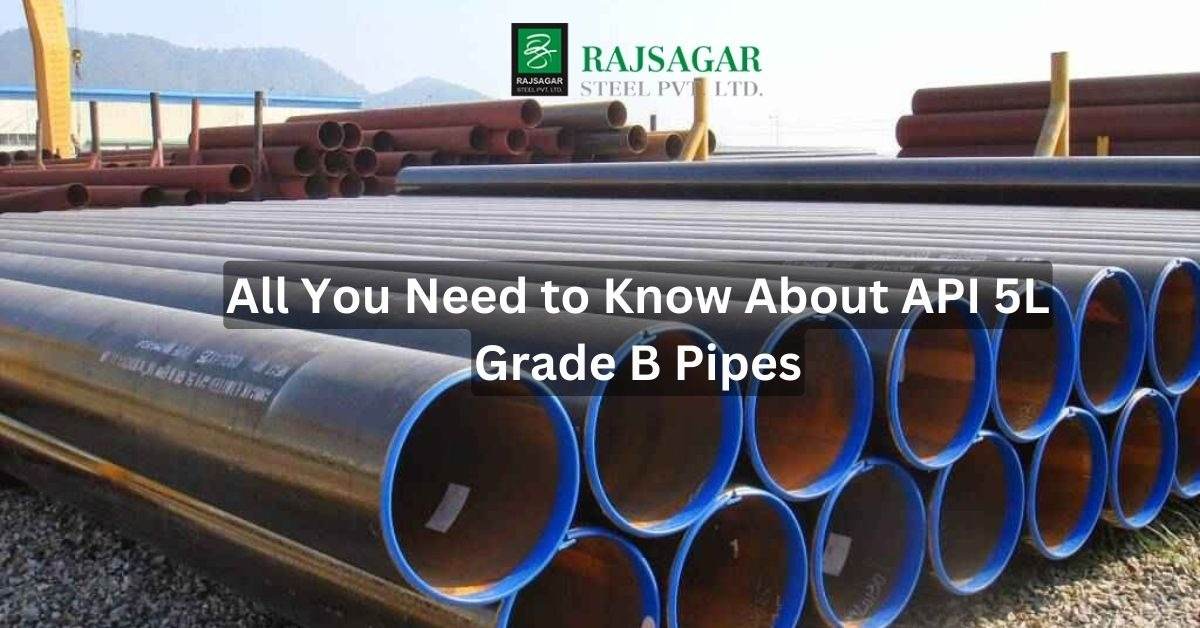API 5L refers to the American Petroleum Institute’s specification for line pipe, which is used for transportation of oil and gas. Grade steel pipes refer to pipes made of a specific grade of steel. API 5L Grade steel pipes are pipes that comply with the API 5L specification and are made of a specific grade. According to their slightest yield strength, these pipes are categorized as “Grade B.” Carbon steel, high-strength low-alloy steel, and alloy steel are among the materials often used to make them. The pipes are made to fulfill particular specifications for chemical composition, mechanical qualities, and dimensional tolerances, as well as requirements for pressure, impact, and other testing.
Features
The flexibility of API 5L Grade Steel Pipes makes them ideal for a variety of uses. They can be used to transport liquids like water, gas, and other substances. Additionally, they are economical. They are therefore the best option for long pipelines because of this.
These pipes come in a variety of grades as well. They are created with the use of contemporary technologies and premium alloys. Additionally, they are created in accordance with the established guidelines for national and international product quality.
These pipes are put through a number of tests to confirm their quality. These include the micro test, the flare test, the impact test, the chemical test, and the hardness test. All of these tests demonstrate that the pipe was produced with meticulous quality control.
Uses of Carbon Steel Pipes in Industries
In many different industries, API 5l grade steel pipes are a common choice for pipeline systems. They are renowned for their cheapness, resolve, and long term. Moreover, these pipes don’t corrode easily. They are also appropriate for transferring liquids, gases, and other substances.
When compared to cast iron and other piping materials.Carbon steel is stronger and has a longer lifespan. It is a hardly, resilient light, and shock resistant metal. It is available in a variety of grades and may be formed into a variety of shapes.
Industrial applications that demand high temperatures and pressures frequently use carbon steel piping. It works very well when handling chemicals. In addition to being anti-corrosion, it boasts exceptional hardness and tensile strength.
Manufacturing Process
The manufacturing process of API 5L Grade B Pipes typically includes several steps, including heat treatment, hot rolling, and inspection
Heat Treatment: To provide the pipes with the desired mechanical qualities, like as strength and ductility, heat treatment is used. Normalizing, quenching, and tempering are all parts of the heat treatment process. In order to normalize, the pipes must first be heated to a high temperature before being cooled in air. Quenching is the process of rapidly cooling heated pipes in oil or water.
Hot Rolling: The billets are hot-rolled into pipes of the required size and shape after being heated to a high temperature. To lower the thickness and lengthen the pipes, hot rolling requires putting the billets through a series of rollers at high temperatures.
Inspection: The pipes are carefully examined to make sure they adhere to the necessary requirements and standards. Visual inspections, dimensional measurements, and tests for toughness and other qualities can all be a part of this.
Although other procedures like ingot casting, sizing, surface treatment, and packing are also significant in the manufacturing of carbon steel pipe, these three are the most crucial since they determine the pipe’s ultimate mechanical and physical properties.
Difference Between API 5L B Pipe & A106 Pipe
API 5L piping is usually used for both seamless steel pipes and welded steel pipes, but ASTM A106 is particularly for carbon seamless steel pipes which can be used for high-temperature and high-pressures service for as power generation.
API 5L steel pipe comes in a variety of wall thicknesses and grade API 5L Grade B Seamless Pipe is made up of a steel material that has carbon, manganese, copper, nickel, chromium, molybdenum phosphorus, sulfur and vanadium in the composition. The material also has good strength. The pipe is suitable for use in conveying gas, water, oil, and other liquefied media.
ASTM A106 Seamless Pressure Pipe (also known as ASME SA106 pipe) covers seamless carbon steel nominal wall pipe for high-temperature service. Suitable for bending, flanging and similar forming operations. NPS 1-1/2″ and under may be either hot finished or cold drawn.

